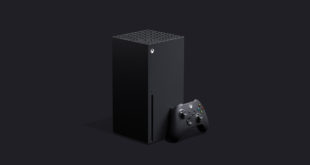Despite expanding on the successes it has enjoyed with the Kindle, Kindle Fire and potentially promising Fire TV, Amazon’s new Fire Phone has been criticised by some analysts.
Aside from the device’s 3D Dynamic Perspective screen, which tracks a user’s head and alters the screen image to create a pseudo-3D effect, the handset’s other big innovation is Firefly – this can recognise around 100m real-world consumables from DVDs, TV shows and toys to songs, bar codes, phone numbers and email addresses.
Amazon says that Firefly recognises 245,00 movies and TV episodes, 160 live TV channels and 35 million songs, for instance.
While the scope of this functionality is vast, its main thrust is to allow owners to see something, show it to their phone and have it automatically ordered from Amazon. There’s even a dedicated hardware button to access Firefly at any given moment.
As Quartz puts it: ‘Amazon launches a shopping machine and calls it a phone’. All of which begs the question – does the Fire Phone serve the owner or its creator?
The fact that the device’s main technological purpose is to make it easier than ever to buy things from Amazon isn’t the only criticism, however.
The handset – which is so far only confirmed for the US – is exclusive to AT&T and requires that developers tailor their apps to use the phone’s specific features, potentially limiting the range of supported software on offer.
Amazon’s debut smartphone includes differentiated and technically impressive features, but none represent the game changer which Amazon needs to drive consumer adoption,” head of mobile at analyst IHS Technology Ian Fogg said.
By launching on just one carrier, in just one country, Amazon is artificially capping its addressable market at a very low level: AT&T ships around 8m smartphones each quarter, which is a tiny fraction of the global smartphone market.
The Fire [is] less appealing for the third party app developers which Amazon needs to tailor their apps for the Fire’s differentiated features such as dynamic perspective. Amazon will either need to accept fewer apps supporting the features and so reduced differentiation for the Fire, or it will have to pay for developers to code for its smartphone, raising Amazon’s costs and making it even harder to push its smartphone strategy into the black.”
There’s also the glaring omission of support for the Google Play Store, potentially forcing existing Android owners to ditch their current software line-up should they wish to make the jump.
Fogg also questioned the appeal of Firefly’s object recognition features which, while obviously appealing in principle to Amazon, have enjoyed limited appeal on rival devices such as Google Glass.
While Firefly is technically impressive, 100 million objects is a fraction of the number of objects in the world,” he added. Amazon will find it easier to persuade existing Fire owners to test and use this feature than for it to drive Fire customer acquisition. Because, why should a consumer buy a premium smartphone just in order to have an easier way to buy more other goods?”

 MCV/DEVELOP News, events, research and jobs from the games industry
MCV/DEVELOP News, events, research and jobs from the games industry



